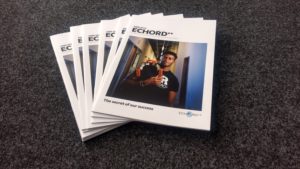Robots mastering every situation
“Excellent” and “our expectations were by far exceeded” — these were some of the statements that international experts made end of March as an overall conclusion to the end of the EU project ECHORD++. ECHORD++ had a runtime of five years and was coordinated under the direction of Prof. Alois Knoll of the Technical University of Munich (TUM).
ECHORD++ supervised application-oriented projects from almost all areas of robotics research and application: Robots as assistant systems in hospital operations, for rehabilitation, in agriculture, logistics, the service industry, for monitoring public sewers, as thinking employees in production and waste management and many other use cases. The very diverse application areas of the project brought together partners from many European countries. According to Professor Knoll, ECHORD++ faced the “absurd” problem that scientists applied in close collaboration with industrial partners for over 250 research projects, but only 32 of them were approved and funded. In the end, ECHORD++ had the largest network in robotics with almost 110 project partners and more than 1000 participants from Iceland to Spain.
Although each individual project was only funded for 18 months and some of the projects have just recently been completed, four startup companies were created, with more waiting in the wings. This was made possible by the strict alignment of the projects with the needs of the market and the close cooperation with corresponding industrial partners. For example, in collaboration with two Swedish recycling companies (Stena Recycling and Refind Technologies), a robot has emerged that can differentiate and sort batteries and accumulators.
New ways of funding
During the lifetime of ECHORD++, three so-called Robotic Innovation Facilities (RIFs) were set up: in Bristol / Great Britain, in Paris-Saclay / France, and in Pontedera / Italy. These centers offer free access to high-tech robotic equipment and expertise for SMEs within the European Union. The RIFs will continue to exist, as the inflow of small enterprises is enormous and so is their economic success. There are plans to link these centers more closely in the future, and thus to increase their success through synergy effects.
Another innovation in ECHORD++ was the introduction of Public End-user Driven Technological Innovation (PDTI), a new way of funding for the public sector. Two areas of application seemed particularly suitable: robots for monitoring the urban sewers and robots for the comprehensive geriatric diagnostics in hospitals. With the concept of PDTI facilitation, four promising projects should be put into deployment as soon as possible in close cooperation with hospitals and municipalities. Together with the city council of Barcelona, a moving and a flying robot were created to monitor the narrow sewers. They send images to the outside in real time, thus saving employees from having to climb in person into these tight and unpleasant working premises. As part of the review, the evaluators were able to watch the operation of these two robots “live” in Barcelona, well protected of course.
The two different concepts for a comprehensive geriatric examination include the so-called Barthel test, which assesses the ability of elderly patients to cope with everyday life and their mobility. These tasks are performed automatically by the robot without the need of a doctor. This saves a considerable amount of time in hospital operation because the doctor is already fully informed in advance and can plan therapy or support measures accordingly.
39 million for future robots
ECHORD++ already had a predecessor: ECHORD. Altogether more than ten years of robotics technology could be developed and researched. The European Union has invested almost 39 million euros in total and has taken a completely new approach. Unlike before, it entrusted this funding in its entirety to the consortium, which in turn developed and published relevant calls for research topics and evaluated them scientifically together with international experts. 80% of the funding went to projects outside the core consortium. “Automation, robotics and artificial intelligence are the core technologies that our society will have to deal with in the future,” says Prof. Knoll. “It is enormously important that the EU supports this research and development with substantial funding in order to keep the European robotics industry at the forefront.”

The public sewer system has to be checked regularly and is a very unpleasant workplace. Robots work accurately, transfer all the information to the outside in real time and have no sensitive nose. (Photo: SIAR)

This robot saves a lot of time in the hospital, because it independently carries out standardized tests with the patients and then accompanies them to the doctor’s room. (Photo: CLARC)

At the end of the project, a brochure has been published, which can be downloaded on the website (https://echord.eu) or ordered as a printed edition free of charge via info@echord.eu. (Photo: ECHORD++)